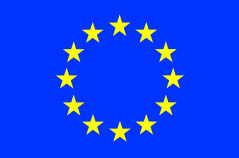National enforcement authorities checked more than 500 websites across the 27 Member States plus Norway and Iceland. They flagged 70% (393) of sites for further investigation in relation to the following main problems: the advertising did not include the required standard information; the offers omitted key information that is essential for making a decision; the costs were presented in a misleading way. National enforcement authorities will now contact financial institutions and credit intermediaries about suspected irregularities and ask them to clarify or take corrective action. The sweep operation checked in particular how business is applying the Consumer Credit Directive (recently transposed in Member States), which aims to make it easier for consumers to understand and compare credit offers.
How the action is undertaken?
A „sweep” is an exercise to enforce EU law. It is led by the EU and carried out by national enforcement authorities who conduct simultaneous, coordinated checks for breaches in consumer law in a particular sector. The national enforcement authorities then contact operators about suspected irregularities and ask them to take corrective action. The Consumer Credit sweep took place in September 2011.
Six countries conducted a deeper investigation „Sweep Plus” of 57 sites to check compliance with consumer rules including payment arrangement, complaint handling and terms and conditions.
The market under scrutiny is used by consumers every day. In 2010, financial institutions in the eurozone had more than €600 billion outstanding consumer credit.
What are the results?
Of the 562 websites originally checked, only 30% passed the sweep test for compliance with the relevant EU consumer rules and 70% of these sites (393) were flagged for further investigation. The main problems found were:
– Missing information in consumer credit advertising: advertising on 258 (46% of websites checked) did not include all the standard information required by the Consumer Credit Directive, e.g. i) the annual percentage rate of charge (APR), which is essential to compare offers, ii) information on whether charges on obligatory ancillary services (e.g. insurance) were included in the total cost, or iii) on the duration of the credit agreement;
– Omission of key information on the offer: 244 (43%) websites did not give clear information about all the different elements of the total cost, e.g. i) on the type of interest rate, (fixed, variable or both), ii) on the duration of the credit (if applicable), and iii) on some of the costs related to the credit (e.g. an arrangement fee);
– Misleading presentation of the costs where the cost of the credit is displayed in a way which is false or could deceive consumers, e.g. i) in the way the price is calculated, or ii) if the consumer is not informed that beyond the cost of the consumer credit itself there is an added obligatory insurance. 116 websites (20%) of the websites displayed this kind of problem.
Sweep Plus
Six countries (Italy, Estonia, Latvia, Lithuania, Slovakia, Sweden) conducted a deeper investigation on 57 of the sites checked – the Sweep Plus exercise. The main problems related to pre-contractual information and contract terms.
What are the next steps?
The enforcement phase will now start: in the coming weeks and months business operators will be contacted by the national authorities and asked to provide clarifications or correct their websites. Failure to do so, depending on the national legislation which is applicable, can result in legal action leading to fines or even closure of the websites. The national enforcement authorities are asked to report back to the European Commission by autumn 2012. The Commission will report on the results.
European Commission, Brussels, 10 January 2012


